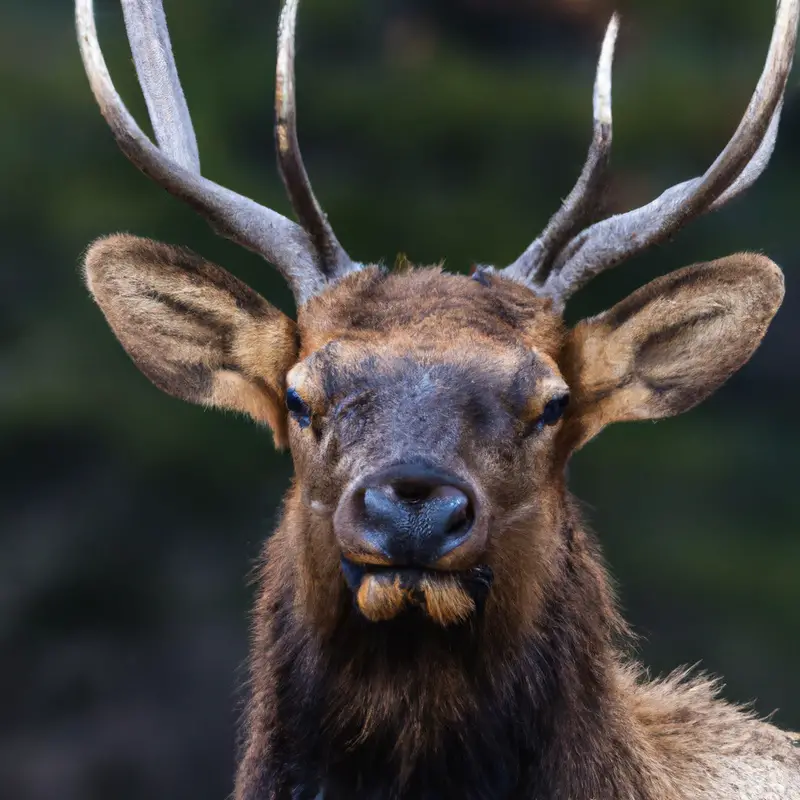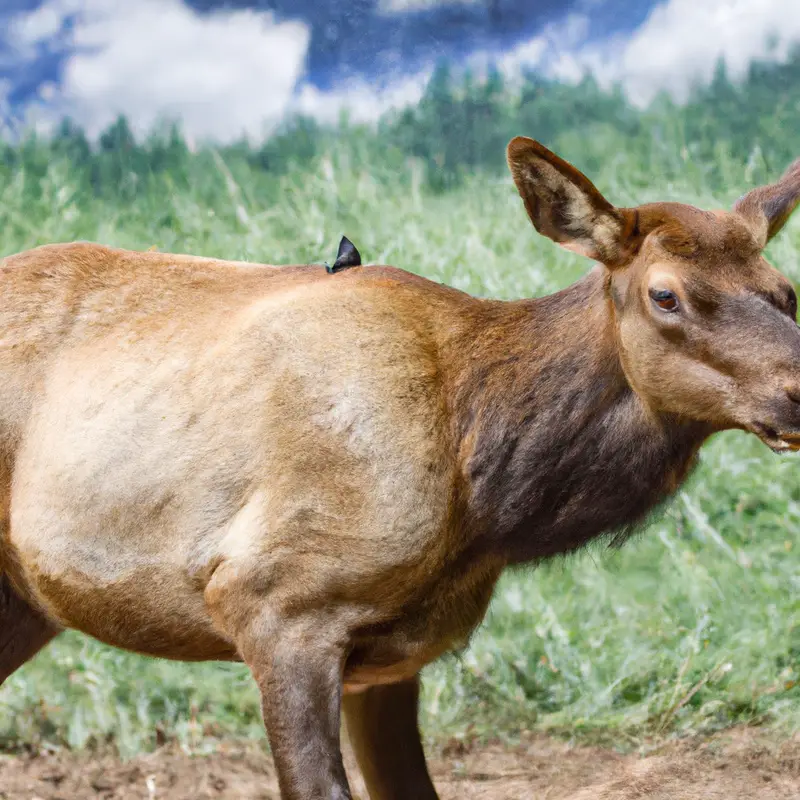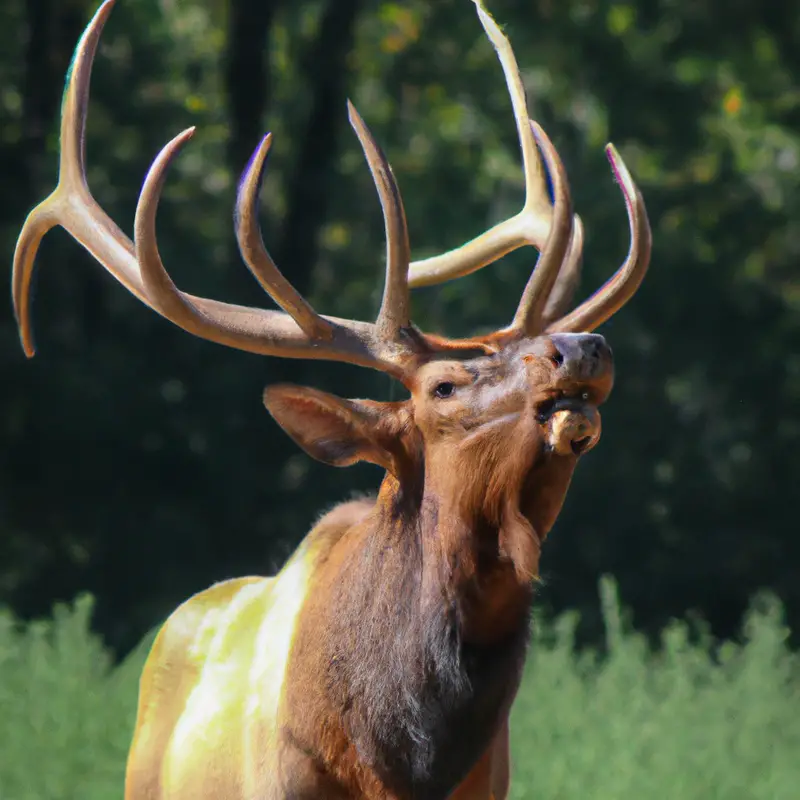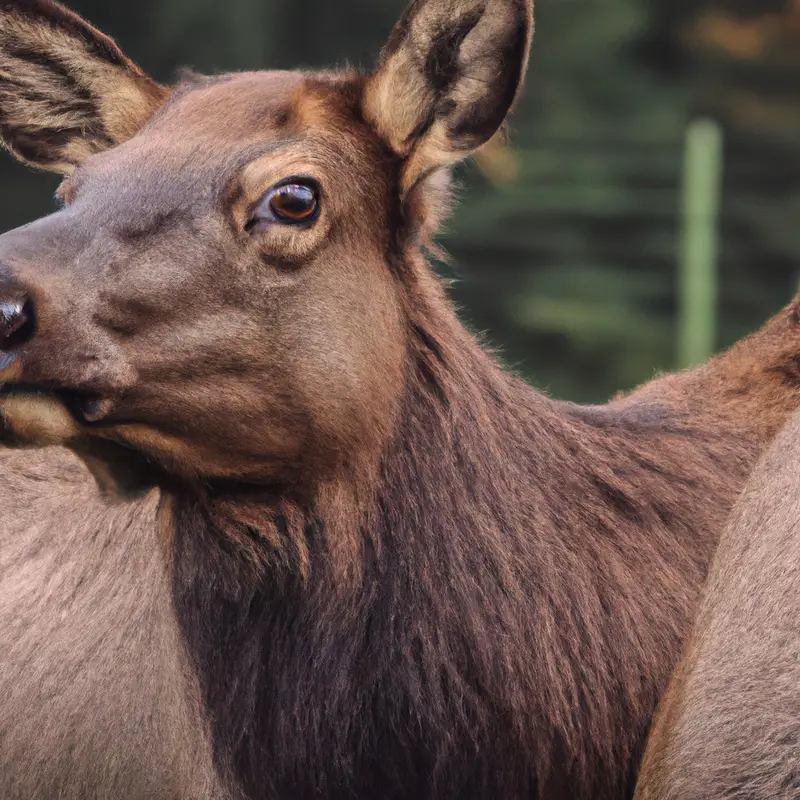Key Takeaways:
- Elk hunting in Arkansas is a popular and challenging activity for outdoor enthusiasts.
- The Arkansas elk population has grown significantly in recent years, providing abundant hunting opportunities.
- Hunters in Arkansas must obtain the appropriate permits and follow strict regulations when hunting elk.
- Successful elk hunters in Arkansas can enjoy the thrill of harvesting a majestic and impressive big game animal.
Are you ready for an unforgettable hunting adventure in the sprawling wilderness of Arkansas? Imagine the thrill of stalking majestic elk among the stunning landscapes of this hidden gem.
But hold on, before you embark on your hunting expedition, there’s a lot to prepare for.
In this guide, I will walk you through everything you need to know about elk hunting in Arkansas. From understanding hunting seasons to selecting the right gear, mastering hunting strategies, and even field dressing your prey – we’ve got you covered.
So lace up your boots and join me on this thrilling journey into the heart of Arkansas’ elk country!
Aspect | Pros | Cons |
Abundance of elk | Increasing population Numerous hunting opportunities | Challenging to locate Competitive hunting pressure |
Harvest success | High success rate Large elk sizes | Limited tags available Tough terrain |
Regulations | Flexible season dates Various hunting methods allowed | Limited hunting zone Strict bag limits |
Experience | Thrilling and challenging Gorgeous landscapes | Physically demanding Weather uncertainties |
Preparing for an Elk Hunt in Arkansas
Understanding the hunting seasons and dates
Understanding the hunting seasons and dates is essential for a successful elk hunt in Arkansas. Elk hunting in Arkansas is regulated by specific seasons and dates set by the Arkansas Game and Fish Commission.
It is crucial to know and abide by these regulations to ensure the sustainability of the elk population and promote ethical hunting practices.
The hunting seasons and dates for elk in Arkansas typically vary each year, so it’s important to check with the Arkansas Game and Fish Commission for the most up-to-date information. Remember to obtain the necessary permits and licenses before participating in the hunt.
Selecting appropriate hunting gear and equipment
Selecting the right gear and equipment is essential for a successful elk hunt in Arkansas.
Here are some key items you should consider:
- Rifle: Choose a high-powered rifle suitable for long-range shooting.
- Optics: Invest in quality binoculars and a spotting scope for scouting and spotting game.
- Clothing: Opt for camouflage clothing that blends well with the environment and provides adequate warmth and waterproofing.
- Backpack: A sturdy backpack will help you carry essential items, such as water, snacks, and extra ammunition.
- Boots: Invest in comfortable and durable hunting boots with good traction for uneven terrains.
- Calls and Decoys: Bring elk calls and decoys to attract and lure the animals closer.
- Field Dressing Kit: A good field dressing kit will help you efficiently process the harvested elk.
- Game Bags: Ensure you have game bags handy to keep the meat clean and protected.
Remember to check and follow any hunting regulations and guidelines set by the Arkansas Game and Fish Commission.

Tips for physical conditioning and fitness
To get physically prepared for an elk hunt in Arkansas, it’s important to focus on conditioning and overall fitness.
Here are some tips:
- Start with cardiovascular exercises like running or cycling to improve endurance.
- Incorporate strength training to build your muscles, especially in your legs and core.
- Don’t forget about flexibility exercises to improve mobility and prevent injuries.
- Practice hiking or walking on uneven terrain to simulate the challenges of hunting.
- Stay hydrated and maintain a healthy diet to fuel your body for optimal performance.

Exploring hunting areas in Arkansas
If you’re looking to explore hunting areas in Arkansas, you’re in luck! The state offers a diverse array of hunting opportunities. From the extensive Ozark National Forest to the expansive White River National Wildlife Refuge, there are plenty of places to explore.
Additionally, there are multiple publicly accessible Wildlife Management Areas that provide great hunting grounds.
Just make sure to acquire the necessary permits, follow all regulations, and always prioritize safety. Happy exploring and best of luck on your hunting adventures in Arkansas!

Hunting Strategies for Elk in Arkansas
Learning about elk behavior and habitat in Arkansas
Elk behavior and habitat in Arkansas can be quite different from other regions.
Learning about these aspects is essential for successful hunting.
First, elk in Arkansas tend to be more nocturnal, so you’ll have better luck hunting during early morning and late evening.
Second, they prefer dense forests and valleys, especially near water sources.
Pay attention to their bedding and feeding areas.
Lastly, understanding their mating season, which usually occurs in the fall, will help you locate bulls during this time.
Additionally, familiarize yourself with their natural movement patterns and vocalizations to increase your chances of a successful hunt.
Understanding elk calls and vocalizations
Understanding elk calls and vocalizations is essential for successful elk hunting.
Elk use a variety of calls to communicate with each other.
The bugle call is a distinctive and loud vocalization made by a bull elk during the rut, which signals its presence and asserts dominance.
Cow calls, such as mews and chirps, mimic the sounds made by female elk and can be used to attract bulls.
Knowing how to imitate these calls accurately will greatly increase your chances of locating and attracting elk.
Additionally, understanding the meaning behind different vocalizations can help you interpret elk behavior and adjust your hunting strategy accordingly.
Using camouflage and scent control techniques
Using camouflage and scent control techniques is essential when hunting elk in Arkansas.
To effectively blend in with your surroundings, choose camouflage clothing that matches the environment you’ll be hunting in.
This will help you go unnoticed by the keen senses of elk.
Additionally, pay attention to scent control by using scent-blocking products and avoiding strong scents that could deter elk.
Taking these steps will increase your chances of a successful hunt.
Tips for tracking and spotting elk
To track and spot elk more effectively, try these tips:
- Look for signs: Keep an eye out for elk tracks, droppings, and rubs on trees. These indicators can point you in the right direction.
- Watch for movement: Elk are big animals, so spotting their movement can help you locate them in the distance. Look for flickering ears or the swishing of a tail.
- Scan open areas: Elk prefer grassy meadows and open valleys. Take time to glass these areas carefully, using binoculars or a spotting scope to scan for any elk.
- Listen for bugling: During the rut, male elk make distinct bugling calls. Their bugles can be heard from afar and can guide you to their location.
- Be patient and silent: Elk have keen senses, so move slowly and quietly when tracking them. Take your time when glassing an area, and avoid sudden movements or loud noises.
Remember, elk are elusive creatures, so tracking and spotting them can require patience and skill.
By using these tips and observing their natural behaviors, you’ll increase your chances of a successful hunt.
Recommended Hunting Techniques in Arkansas
Archery hunting for elk in Arkansas
Archery hunting for elk in Arkansas is a popular and exciting activity.
Here are some key points to keep in mind:
- Choose the right equipment: Make sure you have a quality compound bow or recurve bow that meets the legal requirements.
- Practice your shot: Regularly practice shooting your bow to improve your accuracy and aim.
- Scout the area: Spend time scouting for elk around Arkansas to determine their patterns and preferred feeding areas.
- Plan your approach: Use the terrain to your advantage and plan your approach carefully to avoid spooking the elk.
- Camouflage and scent control: Wear appropriate camouflage clothing and use scent control products to minimize your scent.
- Stay patient: Successful archery hunting requires patience, so be prepared to wait for the right moment to make your shot.
- Follow the regulations: Familiarize yourself with the hunting regulations in Arkansas and adhere to them at all times.
Happy hunting and stay safe out there!
Rifle hunting tips and considerations
Rifle hunting can be an exhilarating experience, but it’s important to approach it with the right strategies and considerations.
Here are a few tips to keep in mind:
- Practice your marksmanship: Before heading out into the field, spend time honing your shooting skills at the range. Consistent practice will help you become comfortable and accurate with your rifle.
- Scout your hunting area: Familiarize yourself with the terrain and potential wildlife movements in the area you plan to hunt. Look for signs such as tracks, rubs, and droppings to identify potential hunting spots.
- Choose the right ammunition: Selecting the appropriate ammunition for your rifle and the intended game is crucial. Make sure to consider factors such as bullet weight, type, and velocity for optimal performance.
- Be patient and observant: Successful rifle hunting requires patience and the ability to stay still for long periods. Take your time, scan the surroundings, and listen for any signs of game. Avoid quick movements that may alert your target.
- Practice scent control: Keep your hunting gear clean and use scent-blocking products to minimize your scent’s impact on wildlife. Animals have a keen sense of smell and can detect human odors easily.
- Set up in a concealed location: Find natural cover or use camouflage to blend into your surroundings. Position yourself in an area that provides good visibility while keeping you hidden from game animals.
- Take ethical shots: Ensure you have a clear sight picture and be confident in your ability to make a clean, ethical kill. Practice shooting from various positions and angles to be prepared for different scenarios.
- Follow all hunting regulations: Familiarize yourself with local hunting laws and regulations. It is essential to hunt responsibly and ethically, respecting the ecosystem and wildlife populations.
Remember, safety is paramount when rifle hunting.
Always follow firearm safety rules and wear proper gear, including blaze orange or other high-visibility clothing.
Happy hunting!
Muzzleloader hunting for elk in Arkansas
Muzzleloader hunting for elk in Arkansas is a popular and exciting activity for hunters. When using a muzzleloader, it’s important to have a good understanding of the firearm and its capabilities.
Choose a muzzleloader that is suitable for elk hunting, such as a .50 caliber or larger.
Make sure to practice your shooting skills before heading out, as precision is key. Also, familiarize yourself with the regulations and hunting seasons set by the Arkansas Game and Fish Commission.
Good luck and happy hunting!
Tips for using decoys and attractants
When using decoys and attractants for hunting, there are a few tips to keep in mind.
- Realistic Placement: Ensure that the decoys are set up in a natural and realistic manner, mimicking the movement and behavior of the target species.
- Evaluate Wind Direction: Place the decoys downwind from your position, as the scent from the attractants will carry to the approaching animals.
- Use Authentic Scents: Choose attractants that closely resemble the natural scent of the animal you are hunting, as this will attract their attention and curiosity.
- Maintain Concealment: It’s important to remain well-hidden while using decoys and attractants. Ensure that you’re in a well-camouflaged position to avoid spooking the animals.
- Experiment and Practice: Different hunting situations call for different decoy setups and attractants. Experiment with different strategies and scents to see what works best in your hunting area. Practice your setup and decoy manipulation to make it appear as natural as possible.
Field Dressing and Processing Elk
Steps for properly field dressing an elk
To properly field dress an elk, follow these essential steps:
- Safety first: Ensure you have a sharp knife and protective gloves.
- Position the elk: Lay the elk on its back with legs spread apart.
- Cut the hide: Make an incision from the base of the chest down to the pelvis.
- Remove organs: Carefully remove the organs, avoiding cutting into them.
- Remove bladder and rectum: Cut around the anal area and carefully remove the bladder and rectum.
- Clean the cavity: Rinse the cavity with clean water and check for any remaining debris.
- Bring it to camp: Pack the dressed elk in game bags or a cooler with ice, keeping it cool and clean.
Tips for quartering and packing out the meat
When it’s time to quarter and pack out the meat after a successful elk hunt, here are a few tips to keep in mind:
- Start by properly field dressing the elk, removing its internal organs to prevent spoiling and decrease weight.
- Use a sharp knife to quarter the animal into manageable pieces. This will make it easier to handle and transport.
- Keep the meat clean and cool to preserve its freshness. Consider using game bags to protect it from dirt and insects.
- Pack the meat out in small loads to avoid straining yourself. Take breaks and use a backpack or game cart if needed.
- If possible, hang the quarters in a cool, shady spot to age the meat for improved flavor and tenderness.
Remember, these are just a few tips to help you with quartering and packing out elk meat. The more experienced you become, the more efficient you’ll be in the field.
Happy hunting!
Discussing options for processing and preserving elk meat
When processing and preserving elk meat, there are several options to consider. One of the most popular methods is to have the meat professionally processed at a butcher shop.
They can cut and package the meat according to your preferences.
Another option is to process the meat yourself. This can be done by learning how to butcher the animal and then freezing or canning the meat.
Additionally, some hunters choose to make various types of sausage, jerky, or other cured meats from the elk meat.
Ultimately, the method you choose will depend on your personal preferences and resources.
Hunting Ethics and Conservation Efforts
Importance of ethical hunting practices
Ethical hunting practices are vital for preserving wildlife populations and maintaining a balanced ecosystem. By respecting hunting regulations, ensuring humane kills, and avoiding over-harvesting, hunters contribute to conservation efforts.
Ethical hunting also promotes safety and respect for fellow hunters and landowners.
Being mindful of the environment, practicing fair chase, and respecting private property are all part of ethical hunting. By embracing these practices, hunters can play a crucial role in sustaining our natural heritage for future generations.
Understanding the role of hunters in conservation
Hunters play a significant role in conservation efforts.
They contribute to wildlife management by helping to control animal populations.
Through hunting, hunters assist in maintaining a balance between species and their habitat.
They also provide important funding through license fees and taxes on hunting equipment, which directly supports conservation programs.
Additionally, hunters often participate in volunteer programs to assist with habitat restoration and improvement.
Their active involvement in conservation showcases their commitment to preserving the environment and wildlife for future generations.
Supporting organizations and initiatives for elk conservation in Arkansas
Several organizations and initiatives actively support elk conservation in Arkansas.
The Arkansas Game and Fish Commission (AGFC) is one such organization.
They work to maintain healthy and sustainable elk populations through habitat management and regulated hunting seasons.
Additionally, the Rocky Mountain Elk Foundation (RMEF) supports elk conservation efforts in the state.
They provide funding for habitat restoration projects and promote conservation education.
These organizations, alongside other stakeholders, play a crucial role in preserving and protecting elk populations in Arkansas.
Frequently Asked Questions about Elk Hunting in Arkansas
What are the hunting seasons for elk in Arkansas?
Elk hunting seasons in Arkansas typically run from October to December.
During this time, hunters have the opportunity to pursue this majestic game animal in designated areas of the state.
The exact dates may vary from year to year, so it’s important to check the regulations set by the Arkansas Game and Fish Commission for the most up-to-date information.
Remember to obtain the necessary permits and licenses, and always adhere to safety guidelines and hunting laws when participating in elk hunting in Arkansas.
Happy hunting!
How can I obtain a hunting permit for elk in Arkansas?
To obtain a hunting permit for elk in Arkansas, you will need to go through a specific process. Start by visiting the Arkansas Game and Fish Commission’s website.
There, you’ll find all the information you need, including the necessary forms and fees.
You may also be required to complete a hunter education course if you haven’t already. Make sure to read and follow all the guidelines and regulations provided.
Once you’ve completed the steps, you’ll be ready to apply for your hunting permit and enjoy elk hunting in beautiful Arkansas.
Can non-residents hunt elk in Arkansas?
Yes, non-residents can hunt elk in Arkansas.
The Arkansas Game and Fish Commission allows non-residents to apply for elk hunting permits.
However, these permits are limited and allocated through a lottery system.
If you’re interested in hunting elk in Arkansas as a non-resident, you’ll need to submit an application during the designated period and hope for a successful draw.
The specific requirements and application process can be found on the Arkansas Game and Fish Commission’s website.
Good luck with your elk hunting adventure!
Are there any special restrictions or regulations for elk hunting in Arkansas?
Elk hunting in Arkansas is regulated by specific restrictions to ensure the conservation and management of the elk population. Some of the regulations include obtaining a valid hunting license, adhering to designated hunting seasons, and following bag limits.
Additionally, hunters must be aware of specific hunting zones and obtain permission to hunt on private land.
It is crucial to familiarize yourself with these regulations and stay informed of any updates to have a successful and legal hunting experience in Arkansas.
What are the success rates for elk hunting in Arkansas?
The success rates for elk hunting in Arkansas vary depending on several factors.
Factors such as hunting techniques, experience, and overall hunting conditions play a significant role in determining success rates.
While it is difficult to provide an exact number, many hunters have reported successful hunts in Arkansas.
However, it is essential to note that elk hunting requires patience, skill, and knowledge of the area.
It is always recommended to thoroughly research and prepare for the hunting season to increase your chances of success.
What should I do if I encounter a bear or other wildlife while elk hunting in Arkansas?
If you encounter a bear or other wildlife while elk hunting in Arkansas, it’s important to prioritize your safety. Here are some steps you can take:
- Stay calm and try not to panic. Maintain a steady presence and avoid sudden movements that could startle the animal.
- Give the animal space. Back away slowly and create distance between yourself and the wildlife. Avoid cornering or blocking their escape route.
- Make noise to alert the animal of your presence. Clap your hands, shout, or use bear spray if you have it. This can help deter the animal and give them a chance to retreat.
- Do not run away. Running may trigger a chase instinct in some animals, putting you at greater risk. Instead, slowly and calmly move away while keeping an eye on the animal.
- If you are carrying a firearm, use it as a last resort for self-defense. Only use it if you have no other options and are in immediate danger. However, it’s worth noting that firearms may not be effective against larger wildlife.
Remember, respecting and observing wildlife from a safe distance is the best way to enjoy Arkansas’s natural beauty.
Final Verdict
Hunting elk in Arkansas can be a thrilling and rewarding experience for any seasoned or novice hunter.
By understanding the hunting seasons and selecting appropriate gear, hunters can increase their chances of success.
Physical conditioning and knowledge of elk behavior are essential for a successful hunt.
By using the right hunting techniques, such as archery, rifle, or muzzleloader hunting, and practicing ethical hunting practices, hunters can contribute to conservation efforts and ensure the preservation of this majestic species for future generations.
So gear up, prepare, and embark on an unforgettable elk hunting adventure in Arkansas.









